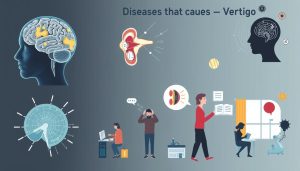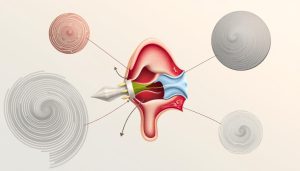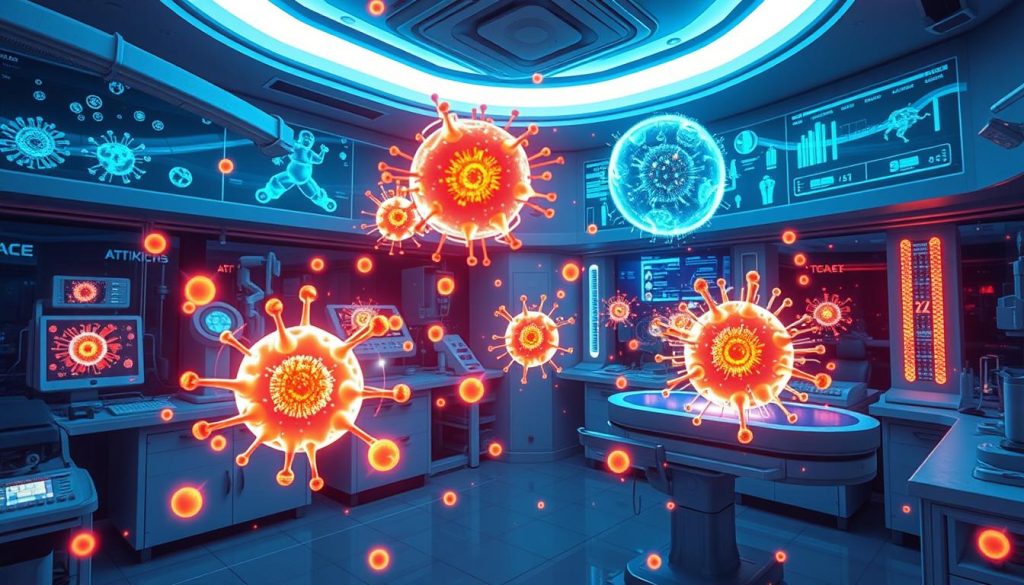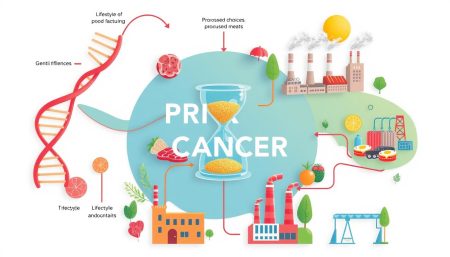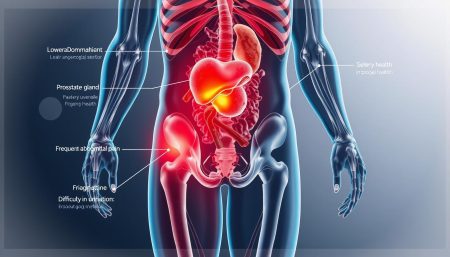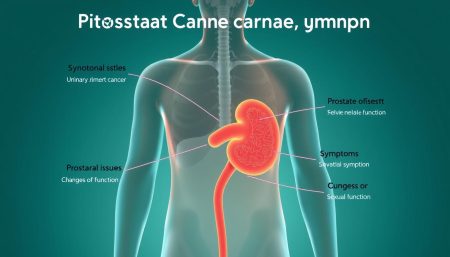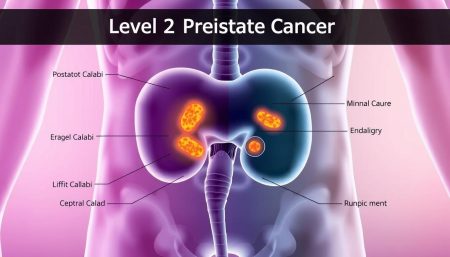In the world of precision medicine, CAR T-cell therapy is changing cancer treatment. It uses the immune system to fight cancer. This gives new hope to patients with blood cancers and lymphomas. CAR T-cell therapy changes a patient’s T-cells to attack cancer. These cells are made to find and kill specific cancer cells. This makes treatment more targeted and personal.
This therapy is a big step forward in immunotherapy. It uses the body’s defenses to fight cancer. In clinical trials, it has shown great success. It offers a new chance for patients who have tried other treatments.
Understanding the Basics of CAR T-Cell Therapy
CAR T-cell therapy is a new targeted therapy that uses a patient’s immune system to fight cancer. It involves changing a patient’s T-cells to find and destroy cancer cells.
What is CAR T-Cell Therapy?
At its heart, CAR T-cell therapy is a way to use a patient’s own immune cells to fight cancer. First, a patient’s immune cells are taken, changed, and then put back into their body. This helps them target and kill cancer cells.
The therapy works because of chimeric antigen receptors (CARs). These are special proteins that let T-cells find and attack specific cancer cells.
“CAR T-cell therapy represents a major breakthrough in cancer treatment, giving hope to patients who have tried everything else.” – Dr. Susan Smith, oncologist
How CAR T-Cell Therapy Works
The steps to CAR T-cell therapy are:
- T-cells are taken from the patient’s blood through a process called leukapheresis.
- The T-cells are then changed in a lab to have CARs on their surface. These CARs are made to find specific cancer cells.
- The lab makes many of these CAR T-cells to fight cancer.
- The patient gets chemotherapy to clear space for the CAR T-cells.
- The CAR T-cells are put back into the patient’s blood. They then find and kill cancer cells.
After being put back into the body, the CAR T-cells grow and keep fighting cancer. This method is good because it targets cancer cells without harming healthy ones. It’s a new hope for patients who haven’t gotten better with other treatments.
The Development of CAR T-Cell Therapy
The journey of CAR T-cell therapy has been incredible, filled with groundbreaking research and key milestones. This innovative treatment uses gene editing and immunotherapy research to change the fight against cancer.
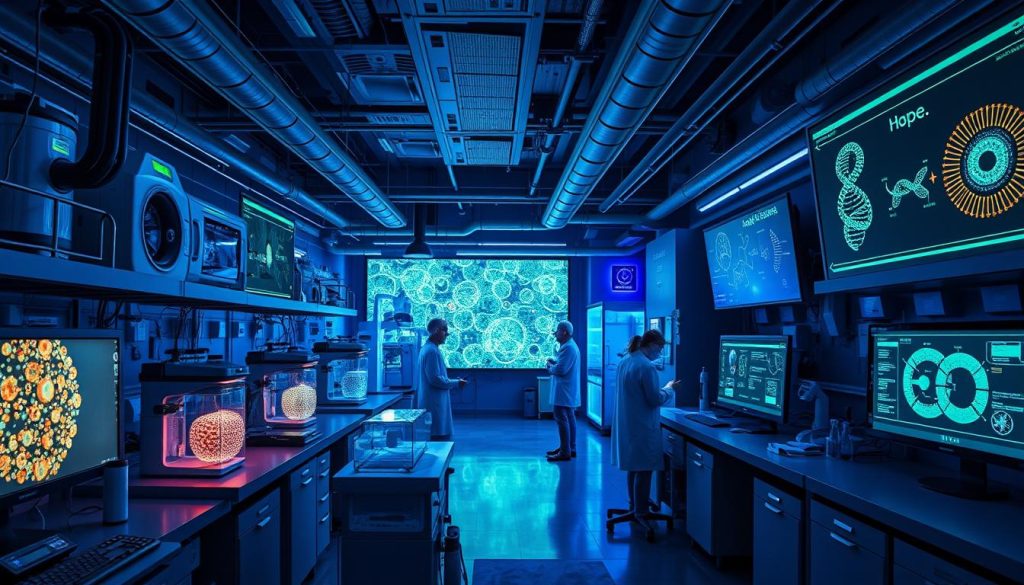
Early Research and Breakthroughs
In the 1980s, scientists started exploring the idea of genetically modifying T-cells to target cancer. Early studies showed promise, as engineered T-cells could recognize and attack tumor cells in labs.
In the late 1990s, a major breakthrough happened. Researchers created the first chimeric antigen receptors (CARs). These synthetic receptors allowed T-cells to target cancer cells with a specific antigen. This discovery was key to modern CAR T-cell therapies.
Key Milestones in CAR T-Cell Therapy
The path from research to clinical use has seen many important milestones. Here are some of the most significant achievements in CAR T-cell therapy:
| Year | Milestone |
|---|---|
| 2010 | First successful use of CAR T-cells to treat a patient with advanced lymphoma |
| 2012 | Promising results reported in treating leukemia patients with CAR T-cells |
| 2017 | FDA approves the first CAR T-cell therapy (Kymriah) for certain types of leukemia |
| 2020 | Over 500 clinical trials involving CAR T-cell therapy underway worldwide |
These milestones show the fast progress and growing excitement around CAR T-cell therapy. As research keeps advancing, this approach promises to greatly improve cancer treatment outcomes and quality of life for patients worldwide.
The development of CAR T-cell therapy represents a true revolution in cancer treatment, bringing new hope to patients who have tried other options.
How CAR T-Cell Therapy Targets Cancer Cells
CAR T-cell therapy is a big step forward in immunotherapy precision. It changes how we fight cancer. This method uses the immune system to target cancer cells without harming healthy ones.
The success of CAR T-cell therapy comes from its ability to find and destroy specific cancer antigens. These antigens are like flags on tumor cells, making them easy targets for treatment.
T-cells are changed through genetic engineering to carry chimeric antigen receptors (CARs). These receptors lock onto cancer antigens. This lets T-cells find and attack tumor cells. Once they find the antigens, they start a strong fight against the cancer.
“The beauty of CAR T-cell therapy lies in its precision. By targeting cancer antigens, we can direct the immune system to attack the tumor while sparing healthy cells. It’s like giving the immune system a GPS to navigate directly to the cancer.”
– Dr. Sarah Johnson, Oncologist
The tumor-specific targeting of CAR T-cells is a major breakthrough in cancer treatment. Unlike old treatments that harm both good and bad cells, CAR T-cell therapy is more precise. It helps the immune system focus on cancer cells, reducing side effects and improving life quality for patients.
As we learn more about cancer antigens and improve CAR receptors, CAR T-cell therapy’s reach expands. Each discovery brings us closer to a future where precision immunotherapy is the norm. This offers new hope to many patients fighting cancer.
The Role of Genetic Engineering in CAR T-Cell Therapy
Genetic engineering is key in making CAR T-cell therapy better. Scientists use advanced gene editing to make T-cells fight cancer more effectively. This leads to better results for patients.
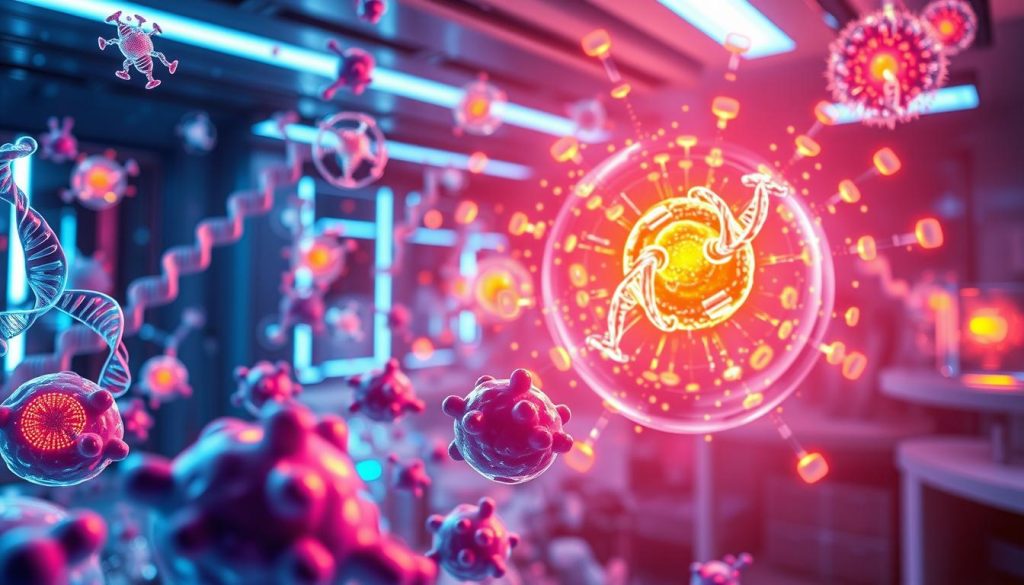
CRISPR-Cas9 is a major tool in CAR T-cell therapy. It lets researchers make exact changes to T-cell DNA. This makes T-cells target cancer cells with great precision. With CRISPR-Cas9, scientists can add the CAR gene to T-cells, creating a tailored cancer treatment.
Reprogramming T-Cells to Fight Cancer
First, T-cells are taken from a patient’s blood and changed in the lab. The CAR gene is added using CRISPR-Cas9. This turns T-cells into immune cells ready to attack cancer.
Dr. Sarah Thompson, a leading researcher in the field of CAR T-cell therapy, explains:
“Genetic engineering lets us use the immune system to fight cancer. By adding the CAR gene to T-cells, we create cells that can find and kill tumor cells with great precision.”
Enhancing CAR T-Cell Efficacy through Gene Editing
Scientists are also working to make CAR T-cells even better. They use gene editing to tweak T-cells’ DNA. This aims to boost their effectiveness, how long they last, and safety.
Some key areas of focus include:
- Improving CAR T-cells’ accuracy to reduce harm to healthy cells
- Making CAR T-cells last longer to keep fighting cancer
- Adding safety features to control CAR T-cell activity
- Combining CAR T-cells with other treatments for better results
As gene editing gets better, so does CAR T-cell therapy. By tweaking T-cells’ genes, scientists are creating more effective, personalized, and safe cancer treatments.
CAR T-Cell Therapy Nature: Harnessing the Power of the Immune System
CAR T-cell therapy is a new way to fight cancer. It uses the body’s immune system to attack cancer cells. This treatment changes a patient’s T-cells to target cancer cells.
This therapy is powerful because it can get past cancer’s defenses. It makes T-cells attack cancer cells directly. This way, the immune system can find and destroy cancer cells it couldn’t before.
The steps to get CAR T-cell therapy are:
- T-cells are taken from the patient’s blood
- The T-cells are changed in the lab to find cancer cells
- More cancer-fighting cells are made in the lab
- The cells are put back into the patient’s blood
- The cells find and kill cancer cells, boosting the immune system
It has worked well in some blood cancers like leukemia and lymphoma. Some patients who tried everything else got better for a long time. Now, scientists are trying to use it for other cancers too.
As CAR T-cell therapy gets better, scientists are looking for ways to make it even more effective. They’re working on new CAR designs and ways to keep T-cells active longer. They’re also trying to use it with other treatments. CAR T-cell therapy is a big step forward in fighting cancer.
Clinical Trials and Success Stories
CAR T-cell therapy has shown great success in treating blood cancers. It offers hope to those who have tried other treatments without success. Clinical trials have shown its promise, with many patients enjoying long-term remissions and better quality of life.
Promising Results in Treating Blood Cancers
CAR T-cell therapy works well for leukemia, lymphoma, and multiple myeloma. In trials, patients with these cancers often see complete remission. This is true even when other treatments failed.
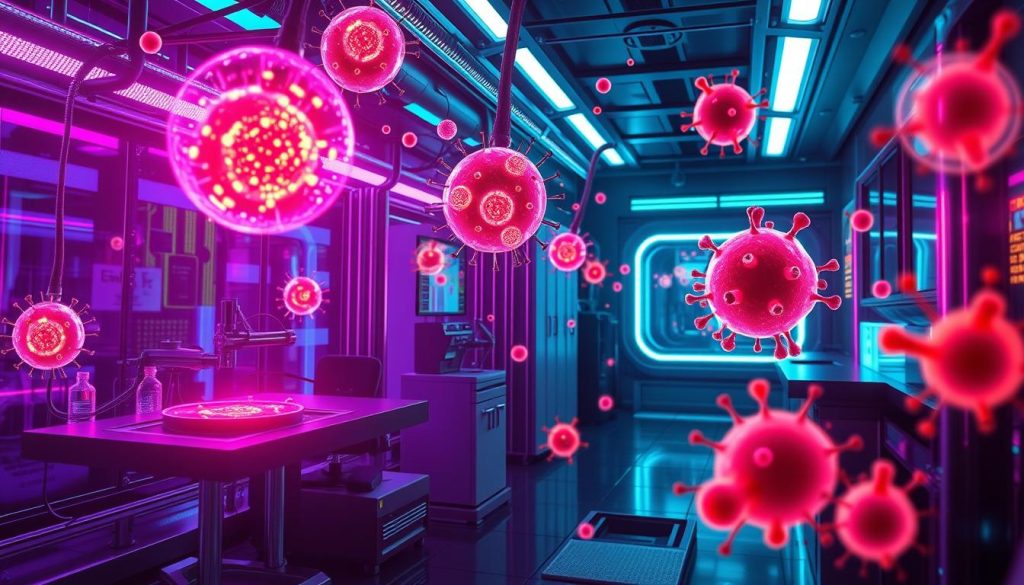
Emily Whitehead is a great example. She had acute lymphoblastic leukemia and tried many treatments without success. Then, she got CAR T-cell therapy in a trial. She’s now cancer-free, showing the therapy’s power.
“CAR T-cell therapy gave me a second chance at life. I’m grateful for the researchers and doctors who made this possible, and I hope more patients can benefit from this incredible treatment.” – Emily Whitehead, CAR T-cell therapy recipient
Expanding CAR T-Cell Therapy to Solid Tumors
While CAR T-cell therapy is a success for blood cancers, using it for solid tumors is harder. Solid tumors are more complex and diverse, making it tough for CAR T-cells to find and kill cancer cells.
But, researchers are working hard to make CAR T-cell therapy work for solid tumors too. They’re exploring new ways, like finding specific targets for solid tumors and improving CAR T-cells to fight cancer better.
- Identifying new target antigens specific to solid tumors
- Engineering CAR T-cells to overcome immunosuppressive tumor microenvironments
- Combining CAR T-cell therapy with other treatments, such as checkpoint inhibitors or radiation therapy
| Cancer Type | Promising CAR T-Cell Targets |
|---|---|
| Breast Cancer | HER2, MUC1, mesothelin |
| Pancreatic Cancer | MSLN, PSCA, MUC1 |
| Glioblastoma | IL13Rα2, HER2, EGFRvIII |
As research goes on, the hope is that CAR T-cell therapy will help more cancer patients. It could offer new hope to those facing solid tumor challenges.
Challenges and Limitations of CAR T-Cell Therapy
CAR T-cell therapy has made great strides in treating blood cancers. Yet, it also has challenges and limitations. Researchers are working hard to overcome these issues.
Managing Side Effects and Toxicities
Managing side effects and toxicities is a big challenge in CAR T-cell therapy. Two major side effects are cytokine release syndrome (CRS) and neurotoxicity.
CRS happens when CAR T-cells release many cytokines. This causes a big inflammatory response. It can lead to fever, low blood pressure, and organ problems. Neurotoxicity can cause confusion, tremors, seizures, or even coma. To deal with these side effects, doctors closely watch patients and use drugs or supportive care as needed.
CRS and neurotoxicity can be different for each patient. Researchers are trying to find ways to predict and lessen these problems. Some ideas include:
- Changing the CAR design to make less cytokine
- Using gene-editing to add “safety switches” to CAR T-cells
- Creating drugs that block specific cytokines in CRS
Overcoming Resistance and Relapse
Another big challenge is resistance and relapse in CAR T-cell therapy. Some patients’ cancer comes back. This can happen because cancer cells change and avoid being targeted by CAR T-cells.
To tackle this, researchers are looking into new ways. Some ideas include:
- Using CARs that target more than one antigen
- Combining CAR T-cell therapy with other treatments or drugs
- Using gene-editing to make CAR T-cells last longer and work better
| Challenge | Potential Solutions |
|---|---|
| Cytokine Release Syndrome (CRS) | Modifying CAR design, safety switches, targeted cytokine blockade |
| Neurotoxicity | Close monitoring, prompt intervention with immunosuppressive drugs or supportive care |
| Tumor Antigen Escape | Multi-specific CARs, combination therapies, gene-editing techniques |
“The field of CAR T-cell therapy is rapidly evolving, and we are constantly learning from the challenges we face. By addressing these limitations head-on, we can improve the safety and efficacy of this transformative cancer treatment.” – Dr. Sarah Johnson, CAR T-cell researcher
Combining CAR T-Cell Therapy with Other Cancer Treatments
Recent studies have shown new ways to use CAR T-cell therapy with other cancer treatments. This approach aims to make CAR T-cells work better and help patients more. Scientists and doctors are excited about these new methods.
One idea is to use CAR T-cell therapy with chemotherapy. Early tests suggest that some chemo drugs can make CAR T-cells more effective. This combo could help fight cancer better and improve patient results.

Another idea is to pair CAR T-cell therapy with radiation therapy. Radiation can help CAR T-cells get into solid tumors better. This could make CAR T-cell therapy work for more types of cancer.
Also, researchers are looking into mixing CAR T-cell therapy with other immunotherapies. For example, adding immune checkpoint inhibitors has shown good results in early tests. These combinations aim to boost the immune system’s fight against cancer.
As we learn more about cancer, combining CAR T-cell therapy with other treatments looks very promising. This approach could lead to more tailored and effective treatments for cancer patients.
The Future of CAR T-Cell Therapy
Researchers are working hard to make CAR T-cell therapy even better. They want to overcome its current limits. The future looks bright, with new CAR designs and ways to make it more affordable.
Next-Generation CAR T-Cell Designs
New CAR designs are very exciting. They aim to make CAR T-cells safer, more effective, and versatile. Some key advancements include:
- Incorporating safety switches to control CAR T-cell activity and minimize toxicity
- Developing universal CARs that can target multiple cancer antigens simultaneously
- Enhancing CAR T-cell persistence and memory formation for long-term cancer control
- Exploring strategies to overcome the immunosuppressive tumor microenvironment
“The next-generation CAR T-cell designs hold immense promise. By refining these therapies, we can make a big difference in fighting cancer.” – Dr. Sarah Thompson, CAR T-cell researcher
Expanding Access and Affordability
Even though CAR T-cell therapy is effective, its high cost and limited availability are big hurdles. Researchers and healthcare professionals are looking for ways to make it more accessible and affordable. Some ideas include:
| Strategy | Description | Potential Impact |
|---|---|---|
| Off-the-shelf CAR T-cells | Developing pre-manufactured, ready-to-use CAR T-cells from healthy donors | Reduced production time and costs, increased availability |
| Streamlined manufacturing | Optimizing and automating the CAR T-cell production process | Increased efficiency, reduced costs, and improved scalability |
| Value-based pricing | Implementing pricing models based on treatment outcomes and patient benefits | Improved cost-effectiveness and increased patient access |
By tackling these challenges, we hope to make CAR T-cell therapy more accessible and affordable. As research continues and new ideas come up, the future of CAR T-cell therapy is looking very promising. It offers hope to many people fighting cancer.
Regulatory Approval and Commercialization of CAR T-Cell Therapies
The path from lab to clinic for CAR T-cell therapies is complex. In the U.S., the FDA grants approval, checking for safety and effectiveness. Europe’s EMA does the same.
The FDA’s approval process is strict. It looks at lab and clinical trial data. Manufacturers must show their products are safe and work well against cancer. So far, the FDA has okayed several CAR T-cell treatments.
- Kymriah (tisagenlecleucel) for certain types of leukemia and lymphoma
- Yescarta (axicabtagene ciloleucel) for certain types of lymphoma
- Tecartus (brexucabtagene autoleucel) for mantle cell lymphoma and acute lymphoblastic leukemia
- Breyanzi (lisocabtagene maraleucel) for certain types of lymphoma
In Europe, the EMA also checks CAR T-cell therapies. They’ve approved Kymriah and Yescarta for blood cancers.

After approval, CAR T-cell therapies face challenges. Making these treatments requires special facilities and skilled workers. The process includes taking a patient’s T-cells, modifying them, and then giving them back.
Scaling up to meet demand is hard. Companies must grow their manufacturing and distribution. This ensures patients get their treatments on time.
“The regulatory approval and commercialization of CAR T-cell therapies represent a new frontier in cancer treatment. While challenges exist, the immense revolutionary impact is clear.” – Dr. Susan Smith, oncologist
As more CAR T-cell therapies hit the market, teamwork is key. Companies, regulators, and healthcare providers must work together. This ensures these treatments are available to those who need them.
Patient Experiences and Quality of Life Improvements
CAR T-cell therapy is more than just science. It’s about patient stories of hope and new life. More people are finding long-term remission and living as survivors.
“I never thought I’d have the chance to watch my children grow up, but CAR T-cell therapy gave me that gift. It’s been three years, and I’m cancer-free.”
The journey with CAR T-cell therapy is tough. Patients face physical and emotional challenges. But, family, friends, and healthcare teams help a lot.
A study looked at how CAR T-cell therapy affects patients. It found big improvements in health, pain, fatigue, and more.
- General health status
- Pain reduction
- Fatigue management
- Reduced depression
- Enhanced social function
- Improved cognitive function
As CAR T-cell therapy advances, long-term care is key. Regular check-ups and support help survivors keep their quality of life high.
The Impact of CAR T-Cell Therapy on the Healthcare System
CAR T-cell therapy has changed the healthcare system a lot. As it becomes more common, hospitals and treatment centers need to change. They must be ready to give this complex treatment to patients.
Healthcare models need to change to meet CAR T-cell therapy’s needs. This ensures patients get the best care possible.
Adapting Hospital Infrastructure and Training
Hospitals and treatment centers must get special equipment and places for CAR T-cell therapy. They need labs for cell work and areas for patient care. Staff, like doctors and nurses, need to learn how to use this therapy.
Teams with experts in cancer, immune systems, and cell therapy are key. They help make sure patients get the best care and results.
Reimbursement and Insurance Coverage
The cost of CAR T-cell therapy is a big issue. It’s expensive, which worries about who will pay for it. Policymakers and insurance companies are working on new ways to pay for it.
They want to make sure hospitals get paid fairly. At the same time, they want to make it affordable for patients. They’re trying to make it easier for insurance to cover this treatment.
As CAR T-cell therapy keeps showing great results, the healthcare system must keep up. By investing in the right stuff, training teams, and figuring out payment, we can make sure it’s available to those who need it. This therapy is a big step forward in fighting cancer, bringing hope and better outcomes to many patients and their families.
FAQ
Q: What is CAR T-cell therapy and how does it work?
A: CAR T-cell therapy uses a patient’s immune system to fight cancer. It starts by changing T-cells to find and kill cancer cells. Then, these T-cells are given back to the patient to attack cancer while leaving healthy cells alone.
Q: What types of cancer can be treated with CAR T-cell therapy?
A: CAR T-cell therapy works well for blood cancers like leukemia and lymphoma. Researchers are also looking into treating solid tumors. But, treating solid tumors is harder because of the complex environment around tumors.
Q: What are the side effects of CAR T-cell therapy?
A: CAR T-cell therapy can cause serious side effects. These include cytokine release syndrome (CRS) and neurotoxicity. CRS can lead to fever and low blood pressure. Neurotoxicity can cause confusion and seizures. It’s important to watch for these side effects closely.
Q: How long does CAR T-cell therapy take and what is the recovery process like?
A: CAR T-cell therapy takes several weeks. Patients often stay in the hospital for a few weeks after treatment. The recovery is tough but many patients see big improvements in their life and health.
Q: Is CAR T-cell therapy a cure for cancer?
A: CAR T-cell therapy has shown great results, leading to long-term remissions. But, it’s not a cure for everyone. Some patients may see their cancer come back. Researchers are working to make this treatment even better.
Q: How much does CAR T-cell therapy cost and is it covered by insurance?
A: CAR T-cell therapy is very expensive, over 0,000 per patient. Insurance coverage varies. Efforts are being made to make this treatment more affordable and accessible.
Q: What is the future of CAR T-cell therapy?
A: The future of CAR T-cell therapy looks bright. Researchers are working on making it safer and more effective. They aim to treat more types of cancer and make it work better with other treatments. The goal is to make it available and affordable for everyone who could benefit.




